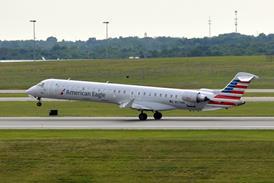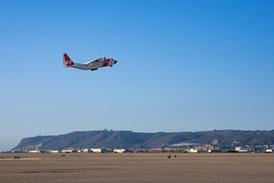The certification process improvement (CPI), a co-ordination system that developed in the late 1990s out of the Federal Aviation Administration talks with general aviation industry groups led by the General Aviation Manufacturers Association, is increasingly becoming a linchpin in many companies' efforts to better plan and cost-estimate new certification projects.
In essence, CPI brings together a certificate applicant and the FAA at the start of the process, thereby improving a company's understanding of what the FAA expects and allowing the FAA to provide early input on how it wants to see compliance demonstrated for certification.
Specifically, the CPI involves more communications, direction and feedback from the FAA at the earliest stages in a development programme, and continues that increased dialogue throughout the process.
Under CPI, the FAA also delegates more final-approval authority to its designated engineering representatives (DER) - independent, third-party, technical experts which the agency has approved to sign-off work in areas ranging from metal or composite structures to powerplants, electrical systems and avionics.
The goal is to prevent unexpected disruptions to the process from delaying completion and increasing costs - generally considered the norm among most aviation companies.
"The old way in which we took our application to the FAA was timed to finish certification when we thought the airplane was ready, but the Aircraft Certification Office (ACO) often required changes with no warning or explanation," complains the head of one small aircraft producer. He prefers anonymity while a certification programme is pending with the FAA.
"You might have to go back and change airplanes in production because of a change in how something is done to a way the inspector likes better," the executive says. "Using CPI is a much saner approach. We know what's expected and work to satisfy those expectations."
Basically, using CPI as the framework for certificating a new design involves two steps between a company and the FAA. First, the company and the FAA negotiate a partnership in safety program (PSP) agreement to establish lines of communications between a company and the agency that work across the spectrum of certification, supplemental type certificates (STC), avionics technical standard orders (TSO), even airworthiness directives (AD). "It lays out how we're going to operate together, our responsibilities and roles," says Mike Gallagher, manager of the Small Airplane Directorate. "We agree to abide by the principles."
To move into CPI requires the two participants to collaborate up fronton a specific programme, identifying processes and standards that the project must meet to earn a type certificate. In both cases, communications are the key.
"We're trying to lay out the plan ahead of time, and start thinking about a method of compliance (MOC) up front, decide what we can delegate and what we can't," Gallagher says.
The manufacturer has the responsibility for complying with the rules; the FAA finds compliance by sampling what the manufacturer has done and how they've done it. Otherwise, the process relies on the DERs as the FAA authority.
"We think CPI will significantly streamline and speed up the certification process," Gallagher asserts. "Earlier involvement of the FAA helps us to avoid later problems." Right now, the FAA is working with 25 manufacturers under the PSP umbrella, including engine-maker Allison-Rolls, Aviat, Boeing, Cessna, Gulfstream, Raytheon Aircraft and Williams International.
To date, companies like Aviat and Cessna, which have used CPI as a guide, have been generally pleased with the results, even though not all have worked as well as hoped - usually because of circumstances not anticipated by the CPI road map.
"We'd like to see CPI as our normal way of doing business, but it's not required," Gallagher says.
Source: Flight International























